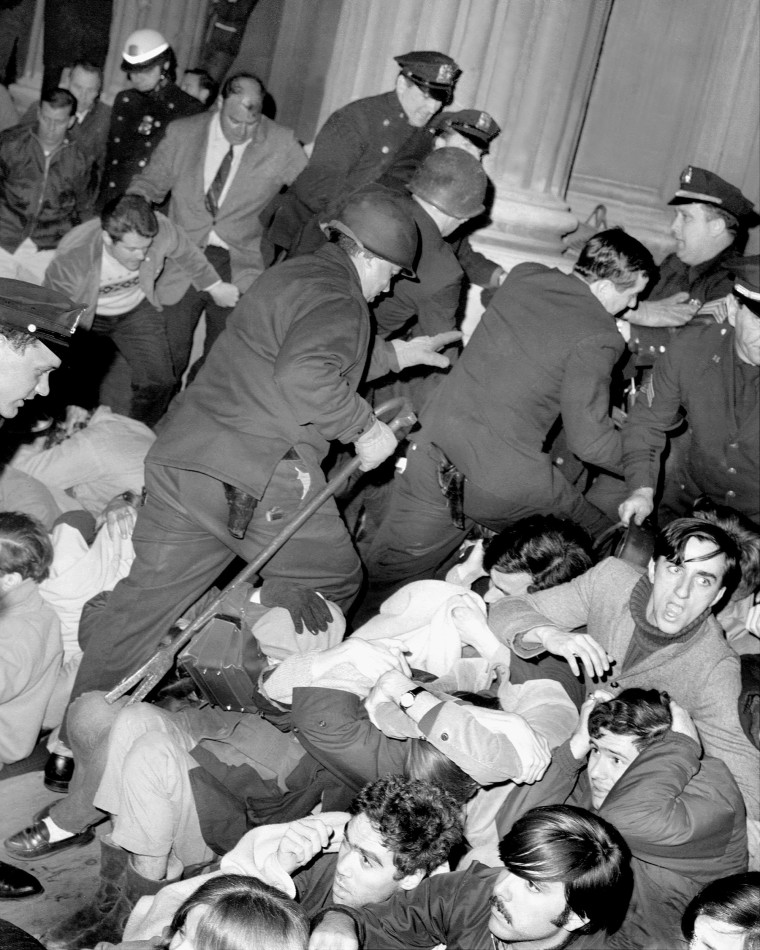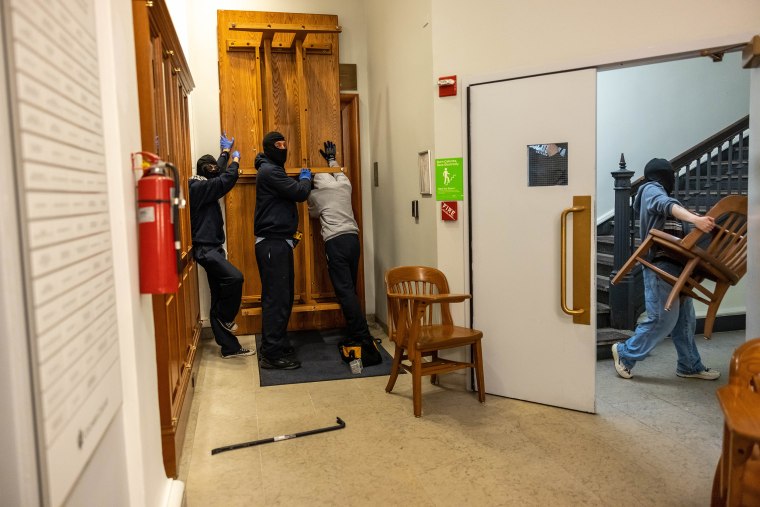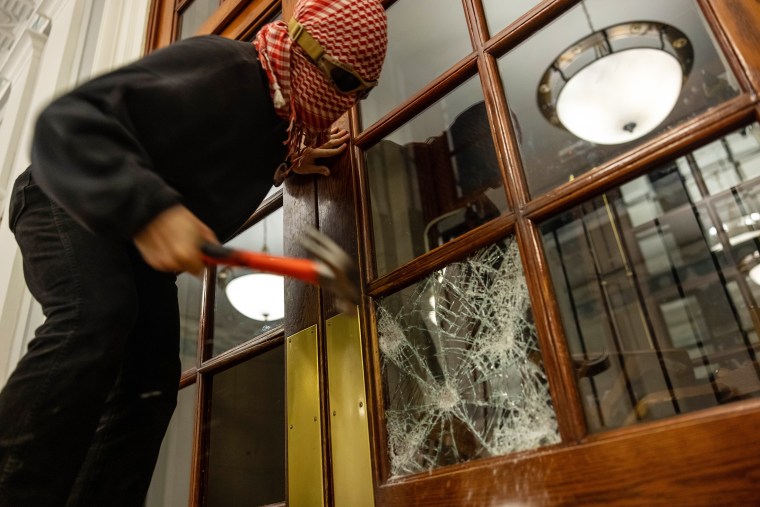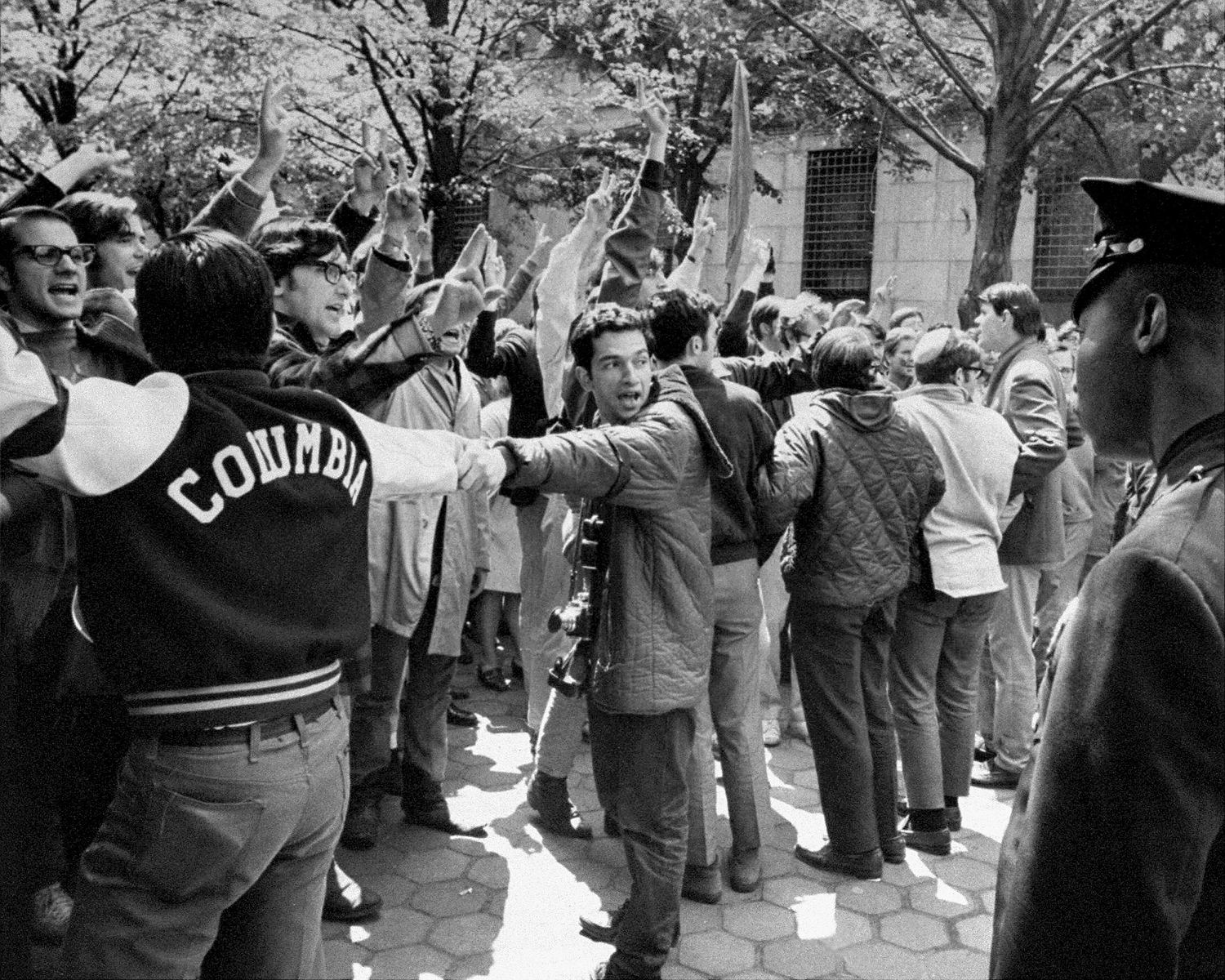“Let’s finish what they did in 1968,” one Columbia protester could be heard saying early Tuesday. “This building is now being liberated,” another protester said, echoing how 1968 activists described their takeover of Hamilton Hall and other campus buildings, which also stemmed from student anger over the university’s ties to a think tank involved in Pentagon weapons research.
The pro-Palestinian activists at Columbia have demanded that the university administration divest from corporations that could be profiting from the war in Gaza and agree to be more transparent about where it invests funds. Israel declared war on Hamas militants in Gaza after the Oct. 7 terror attack, which killed more than 1,200 people. Israel’s military operations in Gaza have killed more than 33,000 people, according to local health authorities.
The specter of a law enforcement crackdown on the pro-Palestinian protests also recalls the drama of 1968.
Two weeks ago, the New York Police Department arrested some 108 people at Columbia, including the daughter of Rep. Ilhan Omar, D-Minn. Columbia’s president, Nemat “Minouche” Shafik, defended the decision to call police, explaining that protesters had ignored written and verbal warnings to disperse and stop trespassing.
Fifty-six years ago on Tuesday, 1,000 police officers cleared five buildings at Columbia that had been occupied for a week. In the melee, according to a contemporaneous news report published by the Columbia Spectator student newspaper, nearly 700 people were arrested and 100 injured, some seriously. At least four faculty members “received severe head wounds,” according to the report, which characterized the police action as a “brutal bloody show of strength.”

“The thing people forget about the 1968 building occupations and strikes is that they weren’t all that peaceful,” Naison said. “The buildings were barricaded, deans were held captive inside Hamilton Hall.” (Columbia students prevented the acting dean, Henry S. Coleman, from leaving his office for a night. He died in 2006.)
“There were faculty outside the buildings trying to protect the students from the violence,” said Juan Gonzalez, a former columnist for the New York Daily News who was one of the Columbia protesters involved in the 1968 demonstrations. “We fought pitched battles with the cops. It was much more violent than what we’ve seen so far at the demonstrations now.”
S. Daniel Carter, an expert in campus security and the president of the company Safety Advisors for Educational Campuses, said he hopes that any law enforcement officers who might be called to Columbia’s campus in the hours and days to come will be much more “judicious” and mindful of how the situation could spin out of control.
In a statement, one of the groups involved in the Hamilton Hall occupation invoked the killings of students at Kent State University and Jackson State College (now Jackson State University) in 1970 against a backdrop of anti-war rallies and civil rights protests. The group, Columbia University Apartheid Divest, warned Columbia’s administrators and trustees not to “incite another Kent or Jackson State by bringing soldiers and police officers with weapons onto our campus.”


In the eyes of some activists, the tumult at Columbia this week hearkens to more recent protest movements. In a statement outlining the Columbia protest movement’s demands, demonstrators said the Hamilton Hall takeover represented “the next generation of the 1968, 1985 and 1992 student movements.”
Columbia student demonstrators occupied the building in 1985 to demand that the school divest from companies doing business in apartheid-era South Africa. Seven years later, students seized the building to rally against the school’s plans to convert the ballroom where Malcolm X had been assassinated into a biomedical research center.
Today, Columbia publicly touts its legacy of student activism. (The “1968 Crisis” tops a list of “Columbia History & Traditions” on the university library’s website.) The violence that unfolded 56 years ago left lasting scars. The war in Vietnam dragged on for another seven years, culminating in the fall of Saigon in 1975. But the university did halt construction of the gym in Morningside Park and sever ties with the Pentagon-linked think tank.
Source: | This article originally belongs to Nbcnews.com











